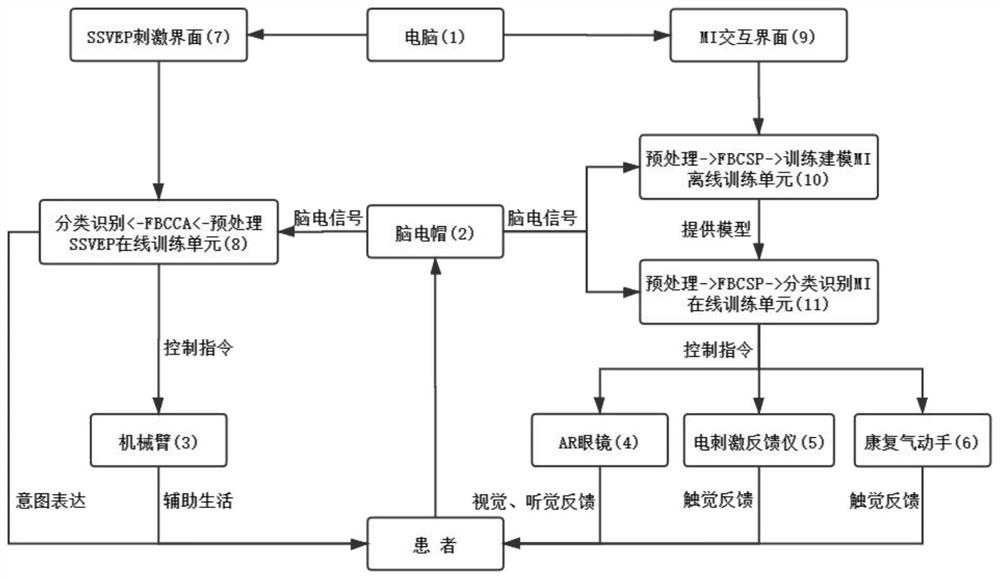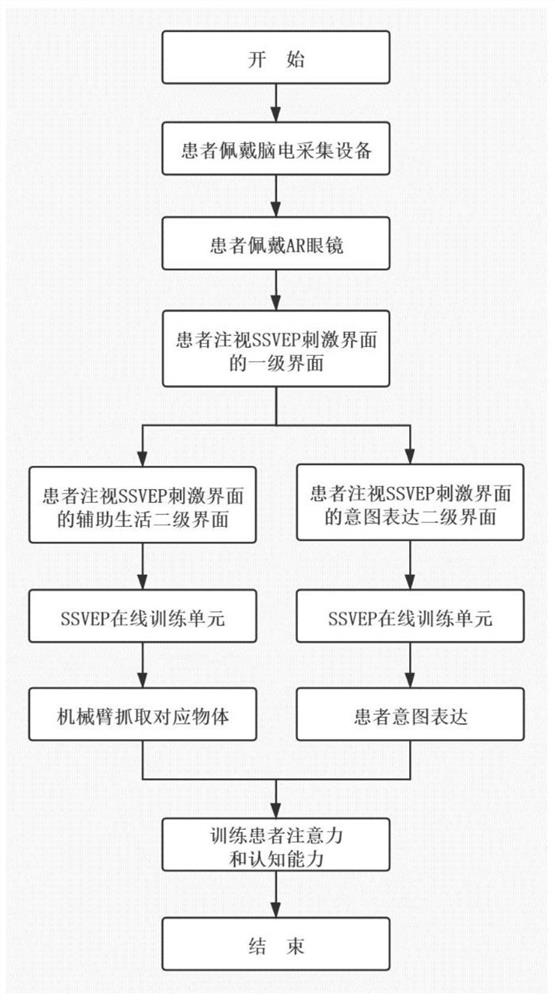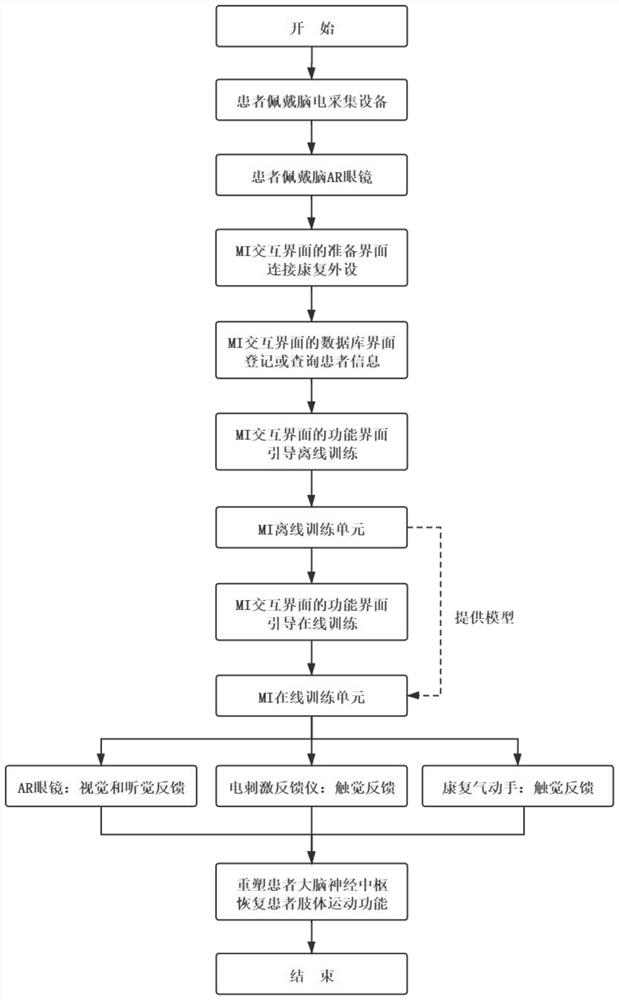Steady state visually evoked potential+motor imagery (SSVEP+MI) brain-computer interface-based stroke rehabilitation training system and method
A rehabilitation training, brain-computer interface technology, applied in electrotherapy, medical science, artificial respiration, etc., can solve the problem of patients' difficulty in expressing their intentions and actions, increasing difficulty, and manpower, etc., to improve attention and cognitive ability, improve The effect of training motivation and assisting daily life
- Summary
- Abstract
- Description
- Claims
- Application Information
AI Technical Summary
Problems solved by technology
Method used
Image
Examples
Embodiment 1
[0075] see figure 1 , a stroke rehabilitation training system based on SSVEP+MI brain-computer interface, including a computer 1, an EEG cap 2, a mechanical arm 3 and rehabilitation peripherals, the computer 1 including: SSVEP stimulation interface 7, SSVEP online training unit 8 , MI interactive interface 9, MI offline training unit 10 and MI online training unit 11, the EEG cap 2 is connected to the computer 1 through TCP communication, the mechanical arm 3 is connected to the computer 1 through a network cable, and the Rehabilitation peripherals are connected with the computer 1 through TCP or communication serial ports;
[0076] The EEG cap 2 is used to collect the EEG signals generated when the patient watches the SSVEP stimulation interface 7 corresponding blocks, and send the EEG signals to the computer 1;
[0077] The SSVEP online training unit 9 in the computer 1 is used for preprocessing the EEG signal, using the FBCCA algorithm to identify it, and obtaining the pat...
Embodiment 2
[0088] This embodiment is basically the same as Embodiment 1, and the special features are as follows:
[0089] The rehabilitation peripherals include: AR glasses 4, an electrical stimulation feedback device 5, and a rehabilitation pneumatic hand 6. The AR glasses 4 are connected to the computer 1 through TCP communication, and the electrical stimulation feedback device 5 is connected to the computer 1 through The serial port communicates, and the rehabilitation pneumatic hand 6 communicates with the computer 1 through the serial port; the sensory feedback includes: auditory feedback, visual feedback, and tactile feedback; wherein:
[0090] The AR glasses 4 are used to send auditory feedback and visual feedback to the patient;
[0091] The rehabilitation pneumatic hand 6 is used to send tactile feedback to the patient;
[0092] The electrical stimulation feedback device 5 is used to send tactile feedback to the patient.
[0093] The SSVEP stimulation interface includes an in...
Embodiment 3
[0101] In this example, if figure 1As shown, a stroke multi-stage rehabilitation training system and method based on SSVEP+MI brain-computer interface, including computer, EEG cap, mechanical arm, AR glasses, electrical stimulation feedback device, rehabilitation pneumatic hand, SSVEP stimulation interface, SSVEP Online training unit, MI interactive interface, MI offline training unit, MI online training unit. It is characterized in that: the EEG cap communicates with the computer through TCP, the mechanical arm communicates with the computer through a network cable, the AR glasses communicates with the computer through TCP, the electrical stimulation feedback instrument communicates with the computer through a serial port, and the rehabilitation pneumatic hand communicates with the computer. Communicate through the serial port.
[0102] In the first phase of rehabilitation training, the computer will generate the SSVEP stimulation interface. Patients can focus on the corres...
PUM
 Login to View More
Login to View More Abstract
Description
Claims
Application Information
 Login to View More
Login to View More - R&D
- Intellectual Property
- Life Sciences
- Materials
- Tech Scout
- Unparalleled Data Quality
- Higher Quality Content
- 60% Fewer Hallucinations
Browse by: Latest US Patents, China's latest patents, Technical Efficacy Thesaurus, Application Domain, Technology Topic, Popular Technical Reports.
© 2025 PatSnap. All rights reserved.Legal|Privacy policy|Modern Slavery Act Transparency Statement|Sitemap|About US| Contact US: help@patsnap.com



